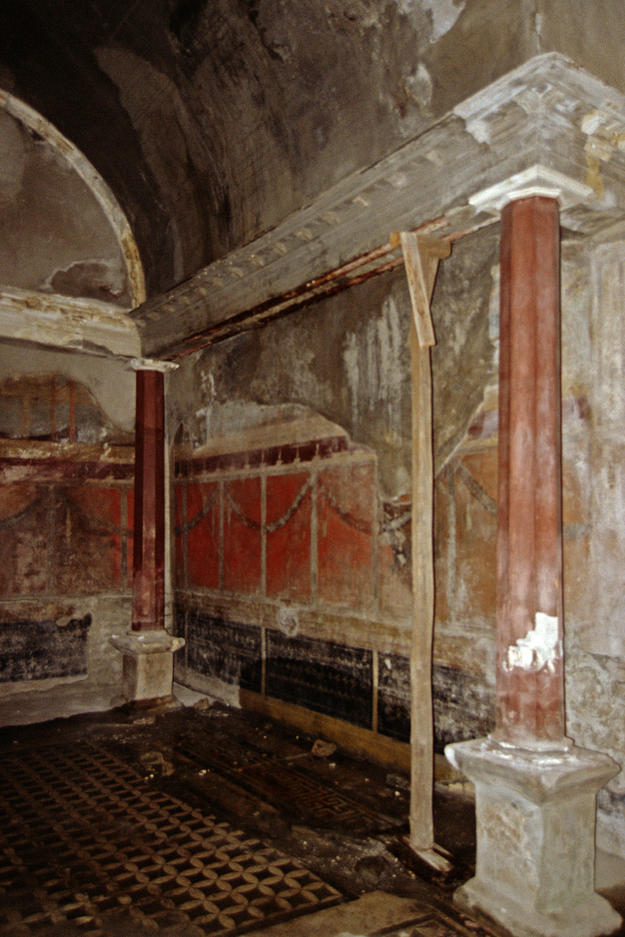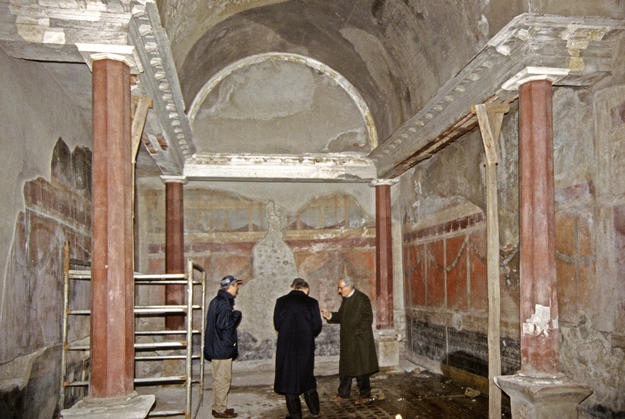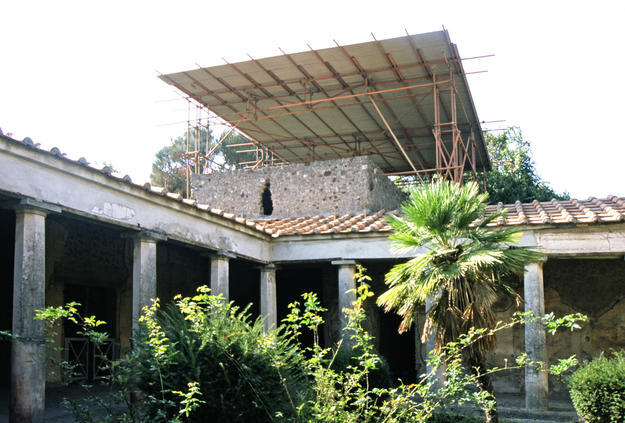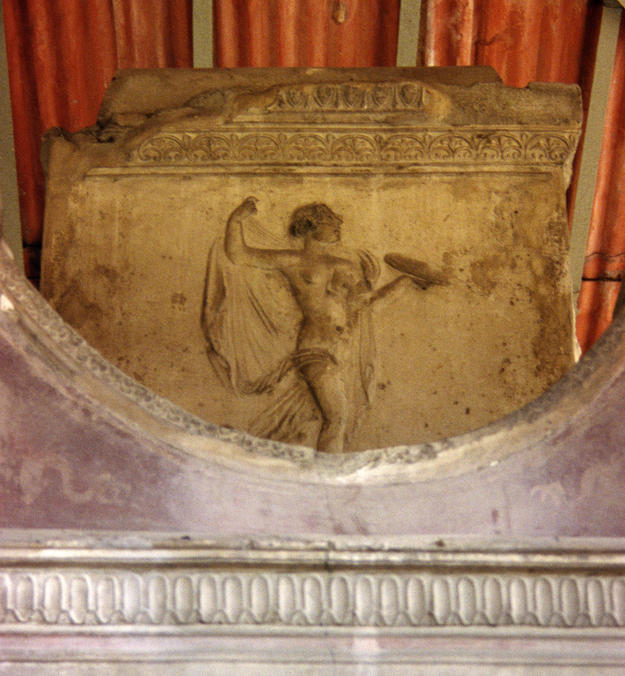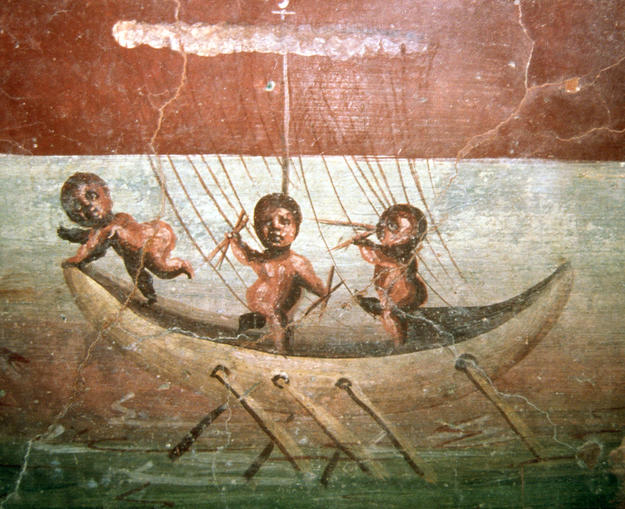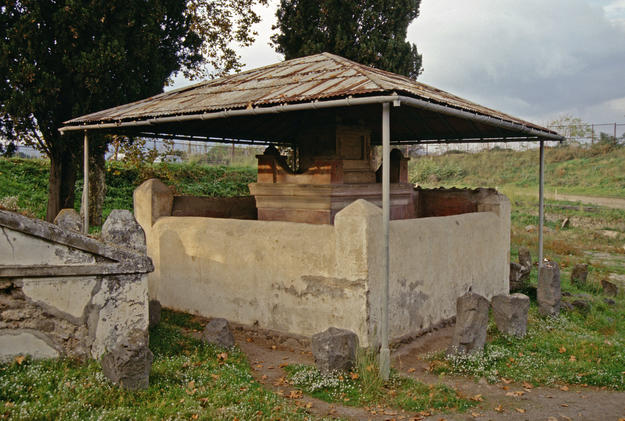The ancient Roman towns of Pompeii and Herculaneum and villas near the Bay of Naples were buried by the eruption of Mt. Vesuvius in August A.D. 79 Ancient Pompeii stands today as a vast excavated site complete with streets, public spaces, and buildings that once served as stores, houses, public baths, and other useful facilities in what was a wealthy Roman city. Pompeii’s initial excavation from the mid-eighteenth to the early nineteenth century was concerned with finding the site’s most valuable treasures for removal to museums and private collections. Since then, site superintendents in charge of excavation have worked to preserve and present this world-famous site as one of Italy’s key heritage attractions. Many of Pompeii’s most fragile and precious remains are on view today in the National Archaeological Museum in Naples. In addition, nearly one-third of the site remains unexcavated. Over the years, exposure to the elements, earthquakes, bombing during World War II, and the arrival of 2,000,000 tourists per year have strained Pompeii’s fragile architectural remains. Modern advances in the field of cultural heritage protection have allowed site superintendents to address some of these issues through site management plans, tourism management planning, and pilot conservation projects.
1996 and 1998 World Monuments Watch
In 1996, ancient Pompeii was included on WMF’s first World Monuments Watch list, and then again in 1998. From 1996 to 2002, WMF provided technical support and funding for four interventions to the overall conservation effort to protect this iconic archaeological site. They were: 1) underwriting the Piano di Pompeii (a plan for conserving and presenting Pompeii); 2) carrying out a pilot conservation project at the Tomb of Vestorio Prisco; 3) developing conservation planning at Insula V2, in particular, its House of the Silver Wedding Anniversary; and 4) convening the first international conference on preserving Pompeii and other sites in the shadow of Mt. Vesuvius. Pompeii’s initial placement on the World Monuments Watch resulted in an unprecedented resolution by the Italian government that permitted tourism revenues earned at this site to be invested back into it to ensure its protection and improved display.
The rediscovery of Pompeii and Herculaneum in the mid-eighteenth century revealed the best evidence to date of ancient Roman daily life. The almost completely intact surviving evidence of Pompeii’s physical, social, artistic, spiritual, and economic existence did much to inform scholars on Roman history and shape archaeology as a scientific discipline.

